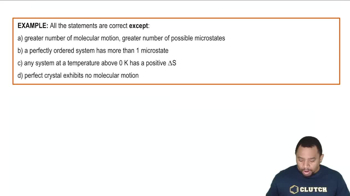Textbook Question
What molecular structural features cause high-density polyethylene to be denser than low-density polyethylene?
 Verified step by step guidance
Verified step by step guidance


What molecular structural features cause high-density polyethylene to be denser than low-density polyethylene?
CdS has a band gap of 2.4 eV. If large crystals of CdS are illuminated with ultraviolet light, they emit light equal to the band gap energy. (a) What color is the emitted light?
CdS has a band gap of 2.4 eV. If large crystals of CdS are illuminated with ultraviolet light, they emit light equal to the band gap energy. (b) Would appropriately sized CdS quantum dots be able to emit blue light?